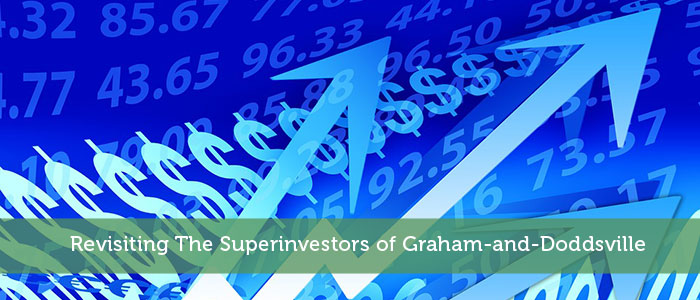By Ned Hawley
A generation ago Warren Buffett delivered a speech at Columbia Business School titled The Superinvestors of Graham-and-Doddsville. The title is a nod to the intellectual debt owed to the patriarchs of modern investing, Ben Graham and David Dodd. Buffett’s speech is considered a classic in investment circles (particularly among “value investing” converts). It is less well known among casual investors. That’s unfortunate. It ought to be required reading for every investor, amateur and professional It’s that timeless.
Buffett’s speech was a tribute to his mentor Ben Graham. But more importantly it takes direct aim at the Efficient Market Hypothesis and in systematic fashion dismantles not so much its core principle – that markets are mostly efficient, with which Buffett agrees – but the purist notion that no one can outperform the market over the long run, or that any instances of outperformance are the result of pure luck. Buffett effectively refutes this notion by offering up the performance of nine investment managers (including himself), all of whom followed the investment principles of Ben Graham but who applied these principles uniquely, both in execution and in stock selection. All of them outperformed the market by a comfortable margin, and over a long enough time period that luck could be eliminated as an explanation. These nine were no exception either, but were representative of the many successful practitioners of Ben Graham’s investment philosophy.
What was Graham’s core principle? Put simply, margin of safety. By this he meant buying businesses at a deep discount to intrinsic value. Said another way, think of margin of safety as paying wholesale, not retail. As Buffett puts it, this doesn’t mean buying a business worth $83 million for $80 million. Borrowing the metaphor of building a bridge, you insist on it carrying 30,000 pounds, but you only drive 10,000 pound trucks across it. Carrying that analogy forward, the idea is to buy a business well below its intrinsic value – say 40, 50, or 60 cents on the dollar. Doing so, in Buffett’s experience, is the best way to minimize your downside risk and capture upside potential.
Recommended Stock Investing Posts:
I’m drawing attention to this speech because as I survey the financial blogosphere today it seems that Buffett’s lesson has been forgotten, if not rejected. There is a small but growing cadre of financial bloggers who are effectively telling the investing public – much like the academics of a generation ago – that it is impossible to outperform the market. The zeitgeist is that we all ought to resign ourselves to the passive performance of the major indices and be done with it. And while it is axiomatic that, at best, only 50% of investors can outperform (and realistically even less when fees are probabilities are factored in), the fact is that with the proper understanding and mindset we can and should do better – if investors follow Buffett’s advice.
While there is much to recommend about passive investing – particularly its mechanical approach and, therefore, it’s subtle ability to tame an investor’s own worst enemy, himself – it leaves unanswered the question of whether the passive index (say, the S&P 500) is optimal in its construction? Graham knew that better opportunities could be found, and that the average investor would benefit from a more enlightened, intelligent approach. But as with so many things in life, each generation needs to be reminded of this simple truth.
Buffett himself anticipated this development. In the closing paragraph of his speech, he acknowledged that some might wonder why he would share his findings and jeopardize future performance by effectively inviting more investors to compete with him and other value investors. As he correctly foresaw, he saw little risk in speaking so publicly because the so-called experts seem to have a perverse inclination to make things more difficult than necessary.
The moral: there is opportunity hidden within today’s skepticism. Don’t resign yourself to average of sub-optimal returns. True, not all can outperform, but I think the greater risk is one of poor investing habits, not excessive optimism. Those who apply the principles of Graham and Dodd will have less competition for good investment ideas, and therefore, will be able to buy businesses at even better prices. As Buffett sums up, “There will continue to be wide discrepancies between price and value in the marketplace, and those who read their Graham and Dodd will continue to prosper.”
Be among those who prosper.
Also check out these other book reviews:
The Intelligent Investor review
The Truth About Money review
Basic Economics review
The Neatest Little Guide to Stock Market Investing review
Top Trading Books
Best Books for New Investors
Best House Flipping Books
Best Warren Buffett Books
—————————————
For further study, see here and here.
Source: The Superinvestors of Graham-and-Doddsville.
Author Bio: Ned is the founder of Just Stocks. He advocates a disciplined, time-tested approach toward investing in stocks. You can follow him on Twitter at https://twitter.com/nedhawley





